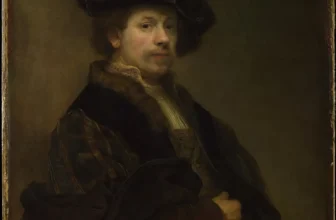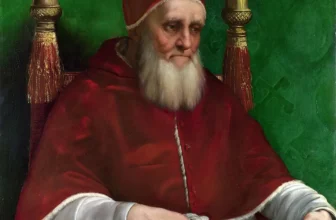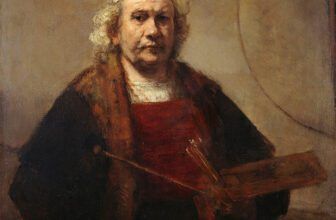Portrait of Pope Innocent X: A Guide for Antique Art Collectors
| Invest in Hidden Masterpiece: Rare Antique Oil Paintings For Sale. Limited Originals Available 💰😊 Are you looking for authentic hidden masterpiece? Explore old master antique oil paintings from the Renaissance and Baroque eras. From 16th-century portraits to 18th-century landscapes. Authenticity guaranteed, Old Master antique oil paintings for sale. Shop Now! 🎨 Renaissance And Baroque Art Landscape Antique Paintings Old Master Portrait Paintings |
Few works in Western portraiture command as much awe, scholarly debate, and collector fascination as Diego Velázquez’s Portrait of Pope Innocent X, painted around 1650 during the artist’s second trip to Rome. Revered for its psychological depth and luminous technique, the painting has long been considered one of the greatest portrayals of authoritative power ever executed. For antique art collectors, it represents a unique convergence of historical significance, artistic innovation, and cultural impact, making it a touchstone within Baroque painting and the broader canon of European portraiture.
This in-depth article explores the painting’s origin, symbolism, controversies, critical reception, current location, and estimated valuation, providing a complete and authoritative resource tailored for serious collectors and art historians.
Velázquez in 1650 Rome
When Velázquez traveled to Italy for the second time in 1649–1651, he was already celebrated as the court painter to King Philip IV of Spain. His mission included acquiring artworks and studying classical aesthetics, but he also aimed to refine his own technique by engaging directly with Italian artistic circles.
Rome in 1650 was a vibrant artistic capital, shaped by the papal patronage system and defined by dramatic Baroque works that emphasized grandeur, spiritual tension, and optical immediacy. Velázquez’s reputation preceded him, and he soon became associated with the Accademia di San Luca and Golden Age Italian masters.
The Commission
Pope Innocent X (Giovanni Battista Pamphilj), who reigned from 1644–1655, was not known for warm relationships with outsiders. The papal court was cautious, political, and often suspicious of foreign influence. However, after Velázquez produced several impressive portraits of individuals within the papal circle, such as Cardinal Camillo Massimi and the Pope’s family members, the pontiff agreed to sit for the Spanish master.
The result was a painting that shocked even contemporaries with its unflinching honesty.
The Painting
The Portrait of Pope Innocent X depicts the pontiff seated in a carved walnut chair, wearing a deep red mozzetta and a white rochet, with a red camauro on his head. The lighting is soft but direct, illuminating the pope’s face and hands, the psychological hinges of the composition.
The rich red draperies dominate the background, not as mere decoration but as a tonal environment that amplifies the pope’s physical presence. Velázquez applied rapid, confident brushstrokes, allowing the paint’s texture to echo fabric sheen and the papal garments’ subtle folds.
The pope’s expression is the painting’s most striking feature: penetrating gaze, tightened lips, a posture that carries tension and wariness. Rather than idealizing authority, Velázquez reveals a complex interplay of intelligence, suspicion, and power.
Why the Portrait Was Considered Controversial
The controversy surrounding the portrait stems largely from Velázquez’s uncompromising realism. Innocent X was known for his austerity and political cunning, especially during the Wars of Castro and other papal conflicts. Velázquez captured not merely the pope’s likeness but his psychological intensity, something unprecedented in papal imagery.
Controversial Aspects
1. Brutal Honesty
Unlike previous papal portraits, which tended to idealize the sitter, Velázquez presented unvarnished humanity. The pope’s eyes are sharp and suspicious; his mouth displays a hint of irritation. This level of psychological candidness was nearly unheard of in official ecclesiastical portraiture.
2. Political Sensitivity
Innocent X’s reign was marked by charges of nepotism, particularly involving his sister-in-law, Olimpia Maidalchini. The last thing the papacy wanted was a portrait that might unintentionally underscore political anxieties or internal tensions. The painting’s rawness made some advisers uncomfortable.
3. Shock Value within the Papal Court
According to historical accounts, when Innocent X first saw the painting, he reportedly exclaimed:
“Troppo vero!” (“Too true!”)
Despite the shock, he still acknowledged it as a masterpiece and allowed it to become part of the Pamphilj collection.
Symbolism and Deeper Meaning
For antique art collectors, understanding the symbolism enhances appreciation and helps contextualize the artwork within Baroque portraiture.
Symbolic Elements of the Painting
1. The Color Red
Red is a traditional papal color symbolizing authority, sacrifice, and divine responsibility. Velázquez uses multiple shades of red to evoke both power and emotional complexity. The red background creates a psychologically charged atmosphere that frames the sitter in a realm of ecclesiastical dominance.
2. The Chair and Drapery
Both elements are heavy with Baroque symbolism. The chair’s solid structure suggests the rigidity and weight of the papal office. The drapery behind him serves as both a compositional anchor and a metaphor for the opulence, sometimes criticized, of the papal court.
3. The Pope’s Expression
Velázquez captured a moment of introspection tinged with scrutiny. Collectors often note that the expression reveals:
High intelligence
Suspicion of political rivals
Burden of leadership
Reluctance to surrender his true thoughts
The painting is less about religious virtue and more about the psychology of absolute power.
4. The Light Source
The lighting, subtle but direct, mirrors Caravaggesque naturalism. It exposes the pope’s complexion and age, symbolizing that even the most powerful earthly authority cannot escape human vulnerability.
Why Collectors Revere Velázquez’s Method
For antique art collectors, Velázquez remains one of the most technically sophisticated painters of the Baroque period.
Brushwork
Velázquez’s handling of paint is famously fluid, with loose, almost impressionistic strokes that nonetheless create photographic realism from a distance. This confident technique influenced later painters such as Goya, Manet, Sargent, and Bacon.
Use of Color
Rich reds and subtle flesh tones demonstrate his mastery of color harmony. The skin appears translucent and alive, achieved through thin glazes and delicate layering.
Realism and Psychology
Velázquez excelled at capturing the emotional and intellectual presence of his subjects. Few artists in history have matched his ability to reveal character through minimal gestures and expressions.
Legacy and Influence: From Goya to Francis Bacon
The portrait’s cultural and artistic influence has been immense.
Impact on Goya
Goya admired Velázquez deeply and borrowed similar methods for portraying royalty and clergy, combining respect for rank with psychological realism.
Influence on Manet
Manet viewed Velázquez as a foundational figure for modern painting. The loose brushwork and tonal sophistication of the portrait informed Manet’s approach to portraiture.
Francis Bacon’s “Screaming Popes”
In the 20th century, the painting inspired Francis Bacon’s famous series of distorted papal portraits. Bacon used Velázquez’s composition as a template to explore themes of anxiety, confinement, and existential dread. This relationship between Baroque portraiture and modern expressionism illustrates the painting’s timeless capability to provoke emotional and philosophical reflection.
Critical Reception: How Scholars and Collectors Have Interpreted the Work
Early Reception
Innocent X himself acknowledged its brilliance, though with mixed emotions. Visitors to the Pamphilj palace in the centuries that followed consistently ranked it among the finest portraits in Rome.
19th-Century Perspectives
By this time, the portrait was considered a pinnacle of realism. Critics marveled at Velázquez’s subtlety and restraint, especially compared to more theatrical Baroque painters.
Modern and Contemporary Criticism
Recent scholarship frequently describes it as:
the greatest papal portrait ever painted
the ultimate expression of Velázquez’s psychological insight
a masterpiece of European portraiture
The work is admired not only for its technical precision but also for its profound emotional intelligence.
Where the Painting Is Today
The Portrait of Pope Innocent X is housed in the Galleria Doria Pamphilj in Rome, Italy. This private palace-gallery belongs to the Doria Pamphilj family, descendants of the pope’s lineage.
Viewing Conditions
The portrait is displayed in a controlled environment that preserves its original color and brushwork. It is one of the gallery’s most visited and celebrated pieces. Collectors often describe seeing it in person as a transformative experience because reproductions cannot fully capture its three-dimensional presence or luminous color quality.
Market Value: Estimated Price and Collectors’ Interest
Is the painting for sale?
No. The painting is not on the market and is extremely unlikely ever to be sold. As a core part of the Doria Pamphilj collection, it is protected by Italian cultural heritage laws that restrict the export and sale of national treasures.
Estimated Market Value
While exact pricing of such a work is speculative, art economists and appraisers frequently estimate that if it were ever auctioned, which is practically impossible, it would easily rank among the most expensive paintings in the world.
Conservative hypothetical estimates place the value at:
$200 million–$300 million at minimum
Potentially over $500 million given its influence, rarity, and cultural importance
For collectors, these numbers highlight the painting’s status as one of the unattainable “crown jewels” of Baroque art.
Comparable Works by Velázquez
Other Velázquez works have achieved high valuations, though none approach the fame of Innocent X. Examples include:
Juan de Pareja (sold to the Metropolitan Museum of Art for over $5.5 million in 1970, a record at the time)
Royal portraits in major museum collections valued at tens or hundreds of millions
These comparisons further emphasize the painting’s extraordinary worth.
Why Antique Art Collectors Consider This Painting a Masterpiece
A Perfect Blend of History and Technique
The painting is a document of papal Rome, Spanish diplomacy, and Baroque artistic evolution.
Unmatched Psychological Insight
Collectors prize works that reveal character as much as physical likeness. Velázquez achieves this with unparalleled subtlety.
Influential Beyond Its Time
Its enormous impact across centuries of art history enhances its scarcity and desirability.
A Benchmark for Portraiture
For many scholars and collectors, this is the greatest portrait ever painted, surpassing even masterpieces by Raphael, Titian, and Rembrandt.
Diego Velázquez’s Portrait of Pope Innocent X stands as a masterwork of Baroque portraiture, revered for its honesty, technical brilliance, and profound psychological depth. Its influence resonates through centuries, shaping artists from Goya to Bacon and dominating scholarly discussions of European art. For antique art collectors, it represents not only the height of Velázquez’s achievement but also an unattainable treasure whose rarity elevates all related works within the field.
Its history, controversies, symbolism, and lasting legacy make it one of the most analyzed and celebrated portraits in the world. Although it will never appear on the art market, its hypothetical valuation underscores its status as a priceless cultural icon. As long as portraiture exists as an art form, Velázquez’s penetrating image of Pope Innocent X will remain a benchmark of mastery.





